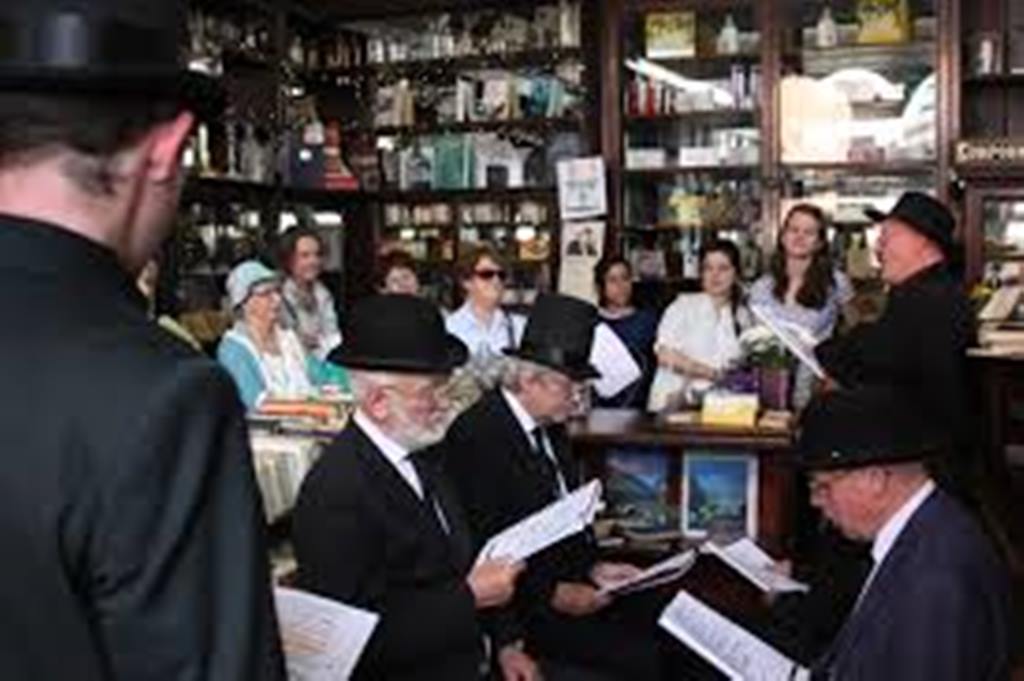 Party Like It's 1904 Party Like It's 1904 Tuesday is Bloomsday, celebrated all over the world, the 111th anniversary of June 16, 1904, the single day (and night) when James Joyce’s “Ulysses” takes place. It is my favorite book -- life through the sad and knowing eyes of a wandering middle-aged Jew, Leopold Bloom, who carries a pack of troubles around Dublin. People still care; The New York Times' book review carried two thoughtful essays on "Ulysses" last Sunday. I read the book every five years or so. Picked it up the other night and came upon a group of men arguing about “Hamlet” and whether it really matters if we know who Shakespeare was. I cannot remember ever reading it. I learned to love this book – and “learned” is the vital word – in the spring of 1962, when I decided to take one graduate course, the novel, at Hofstra, just to keep my brain alive. Our first child was born during that semester, and so were the Mets, but “Ulysses” is clearly the third leg of that memorable trinity of experience. The professor, William D. Hull, spent three weeks on “Ulysses,” imitating the voices of Bloom and his wife Molly and young tormented Stephen Dedalus and all the Dubliners. To this day, I love the Irish accent whenever I hear it. I always thought Dr. Hull was Irish or English but I just looked him up – and he was born in South Carolina. Dr. Hull escorted us to the pubs and coves and hospitals and shops of a bustling city, letting us in on the puns and archaic language – agenbite of inwit, Kentish Middle English for “backbite of remorse,” as Dr. Hull translated it. (My friend Bob Waters at Newsday claimed to have named his dog ch. Agenbite of Inwit.) After three weeks roaming Dublin with Leopold Bloom and Dr. Hull, I had written in ink in the margins of many pages, something I have never done since. I never took another course, as a blessed family life and career took over, but those weeks with Dr. Hull have stayed with me. I have celebrated Bloomsday only once, taking our son David to Symphony Space in 1982 to hear Colleen Dewhurst, that vital earth mother whom I once interviewed, read Molly Bloom’s soliloquy. They are celebrating it again on Tuesday, alas without Dewhurst. When my wife and I finally got to Dublin in 1993, we wandered to some of the sites in “Ulysses” and I took out my grandmother’s birth certificate, good enough for my Irish citizenship. That seemed the least I could do, to honor Joyce and Bloom and Dr. Hull, who passed in 1984. I hope other people treasure a course the way I do this one. Even in this techno-world, when things hop around, Bloomsday is best experienced from a book with thick bold print, including letters that would be on my family coat of arms, if I had one -- KMRIA. Happy Bloomsday.
Brian Savin
6/15/2015 01:40:01 pm
It took Joyce a lifetime to write it, and it will take me a lifetime to read it. As plump Mulliigan put it:
George Vecsey
6/16/2015 12:51:17 am
Brian, I had to look it up. ("And I will go to the altar of God.") My Latin minimal., There are so many words, sentences, episodes, that don't stick after 2-3-4 readings. I am sure I appreciate the book only because I had a good teacher for three intense weeks...but it has let me appreciate a masterpiece for life. My appreciation of a liberal arts education. GV
Thor A. Larsen
6/16/2015 01:34:40 pm
Geroge,
George Vecsey
6/17/2015 03:02:55 am
Thor, thanks. We were in Limerick years ago en route to visit an old family friend who had encamped on a rocky hillside with a view of the western coast. The thing I remember was how much people talked...chattered.....they had so much to say. We hired a driver (no rentals) and he could pick out some Kentucky touches in my speech to go with my New Yawk accent. They are all linguists, I think. The language is so delightful in Ulysses. Words I never heard before or since. Comments are closed.
|
Categories
All
|










